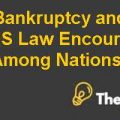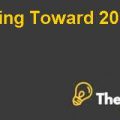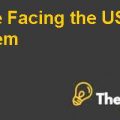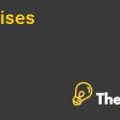ABSTRACT
The case highlights the economic issues faced by Japanese Prime Minister a year after he took office in 2012. It gives a precise picture of Japanese economy after it was hit by real estate and stock market downfall for the period1989-1992. In his initial years, Abe had to confront the challenges of Deflation which had been a major concern for Japan. For that he formulated three sets of plans also called “three arrows” to curb the economic woes. Through this he would get a control on deflation plus he needs to increase the Japanese growth rate. In the first approach he appointed a new governor of central bank that is bank of Japan. His task was to raise the inflation rate and for that he expanded the balance sheet. The second approach revolve around an expansionary fiscal policy keeping in mind to reduce the budget deficit. The third approach was aimed to look after the microeconomic reforms where their target was to increase the GDP with the labor productivity. With Japan’s aging population, they decided to increase the female labor force. They had to decrease the electricity cost and had to bring improvements in health sector. In the conclusion it discusses about the foreign policy challenges with Korea’s and China’s reactions.
INTRODUCTION:
Japan has been going through its economic woes for more than two decades with deflation as the major concern. It has sought government’s help to re-energize the economy .In 2013, Prime Minister Shinzo Abe introduced his own economics approach and named it as Abenomics. It brought structural reforms, an expansionary fiscal policy and monetary easing. Taking the inflation rate to 2 percent was their instant goal with pushing domestic demand and taking the gross domestic product to new highs. To achieve the structural goals, they had to develop good relationships with other trading countries while making their labor force more efficient, which can further reform their labor market. By doing this, they were making their country more competitive.
Japan Betting on Inflation Harvard Case Solution & Analysis
HISTORIC BACKGROUND:
Japanese history dates back to 660BC when according to Japanese Tradition; there was an emperor from Shinto goddess of the sun. Although they had emperor rule, but in the years from 1603 to 1868, there was a strong hold of military leaders called Shoguns. These military leaders had Samurais to protect the kingdom. The Shogun influence ended in 1868 when there was a revolt against the shogunate, after they allowed foreigners to trade in Japan when they were being threatened by the US navy in 1853. Now Japan was controlled by the Meiji emperors and Samurai became members of that administration after losing their weapons and their titles.
After the Second World War when United States took over, Japanese emperors lost control of their power yet again as their title was not mere symbol. Prime minister was now chosen by the bicameral Diet whose responsibilities were to elect the cabinet ministers and to execute authority.
DISCUSSING JAPANESE ECONOMY:
In 1970, Japan had an excellent investment to GDP ratio which was looming at 39%. This helped at real GDP growth by the growth rate of 9.2% from 1955 to 1973. Government was encouraging the banks to lend their funds to export sector. With this Japan was having high saving rates backed by high investments....................
This is just a sample partical work. Please place the order on the website to get your own originally done case solution.










